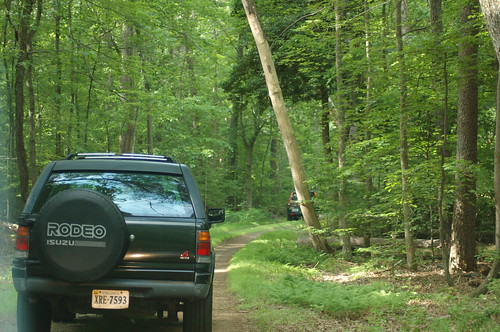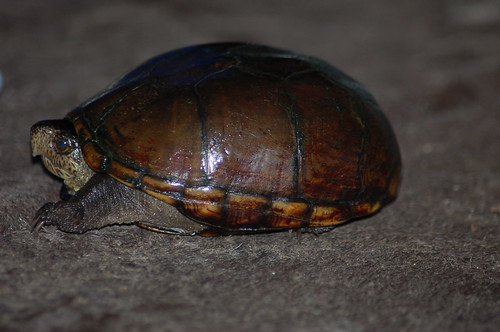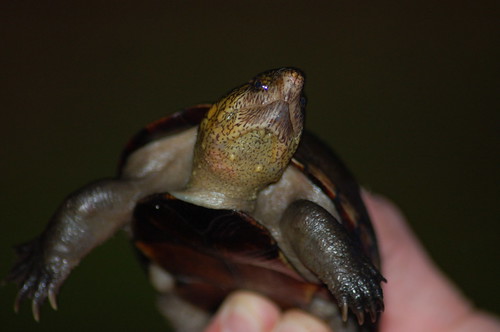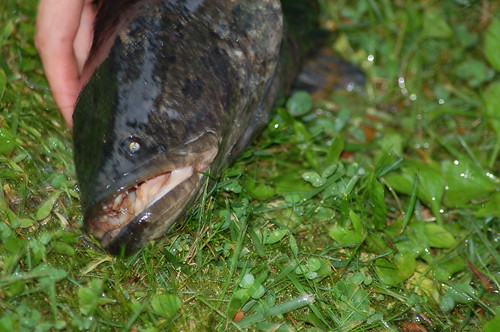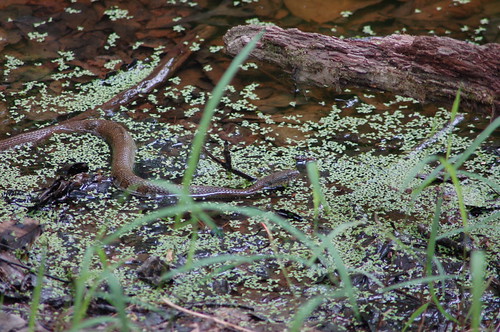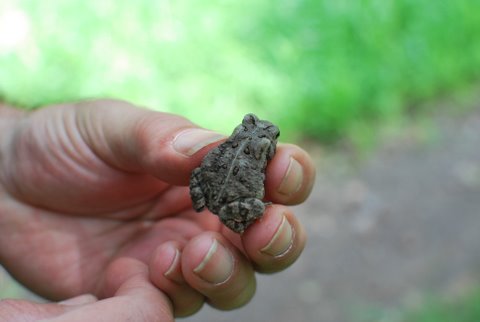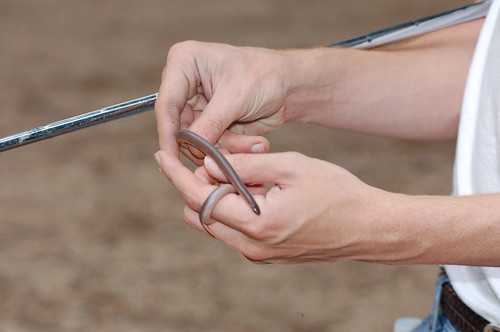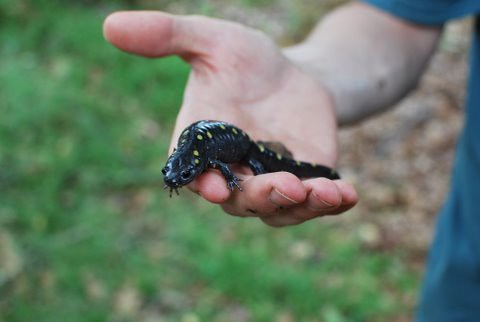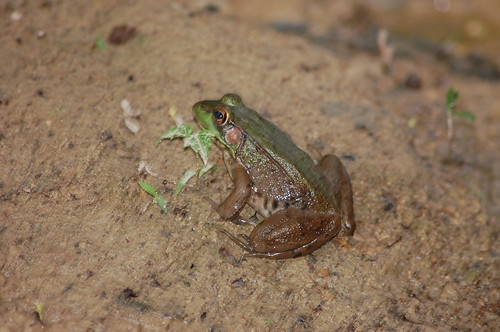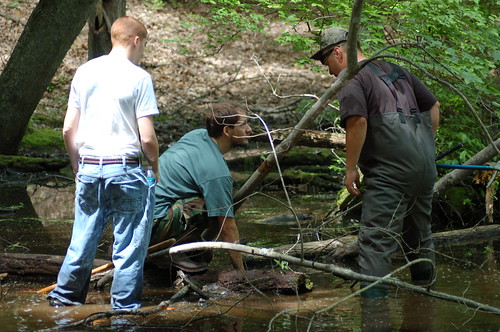Above photo is the Survey Team Representing the Virginia Herpetoligical Society
http://www.cafepress.com/vaherpsociety
The road leading into the Refuge
Memebers of the Virginia Herpetological Scoiety conducted a Reptile and Amphibian Survey of Mason Neck Park duringthe weekend of May 21-23. We split up into teams to survey six predetermined areas of the park for its Herp fauna. As part of team 6 I had the opportunity to trek through areas of the park that was otherwsie off limits to the general public. Our team did well finding the majority of different species as well as the most quantity of species. Nothing unusual however was recorded for the first time and there were a lot of species previously recorded over the years that were not found.
Our techniques for locating species were simple. Find a designated area, fan out individually then look, listen and if possible capture then ID and confirm ID. Our capturing technique utilize snake hooks, stump rippers, dip nets, our hands and tutrtle traps. None of the animals are harmed often the surveyer is from briars, insect bites, snake musking and occaisional bites (nonvenomous species).
One of the two Mud turtles captured in our turtle traps.
Ventral shot of the same animal
Me holding an unexpected bycatch from our turtle traps. Last year snakeheads about the size of an adult human index finger were caught with dip nets form the same ponds where this beast was captured. Had I known these guys were in the pond I may have thought twice about wading in to set the turtle traps.
Mouth of the notorious snakehead fish.
Cool shot of a Northern Water Snake cruising the wetland
Surprisingly didn’t see too many of these guys. Here I am holding an American toad found in the abandon road way.
Perhaps the most abundant snake caught by our team. Here Daniel holds one of two worm snakes found together in the same rotting log.
Presumably a nice juvenile five lined skink scurrying in between fallen logs.
One of the species I had hoped to find and we did. The ground skink, although common, is the smallest lizard we have in the region. The capture of this animal was a collaborative effort between Daniel and myself. Daniel spotted it and I caught it. I have only captured one other several years ago. They are super small and quick. Usually you hear them rustling in leaf litter but by the time you hear them they are already gone. Fortunately for me this one chose to run through a sewer pipe where I was able to persue and capture it.
John Orr with a spotted salamander. Several were caught right at the start of our survey. Onoe of my favorite amphibians.
This was my first capture of the day. A nice ribbon snake. Ribbon snakes were the third most abundant snake species we caught that day. All were caught in the vicinity of the inland wetland areas.
These green Frogs were everywhere. If you didn’t see them you certainly heard them. Their calls sound similar to a banjo pluck. Green frogs were one of the most common animals in the wet areas
The inland wet areas proved to be very productive for my searches. Here I am holding a recently captured Northern Warter Snake.
John Orr (Center), our official guide into the Refuge has located a very large Eastern Snapper. Unable to remove the animal from under a log he calls for reinforcements. Michael Gregory (right) and Daniel Michaleson (left) enter the swamp to assist.
On our way to set turtle traps, Mike and I stopped in the road to get a look at this hefty Eastern Snapping Turtle. Since the survey hadn’t officially kicked off yet we couldn’t
count this toward our species list.


